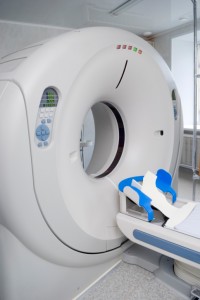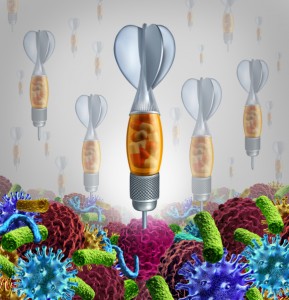 At Florida Lung, Asthma, and Sleep Specialists, we stay aware of the latest lung cancer research studies and scientific trials. This October, a recent, remarkable, multi-site trial has confirmed that advanced imaging with Positron Emission Tomography (PET) can be very helpful in predicting which patients with inoperable lung cancer have the most aggressive tumors.
At Florida Lung, Asthma, and Sleep Specialists, we stay aware of the latest lung cancer research studies and scientific trials. This October, a recent, remarkable, multi-site trial has confirmed that advanced imaging with Positron Emission Tomography (PET) can be very helpful in predicting which patients with inoperable lung cancer have the most aggressive tumors.
This is extremely important because such patients will require additional treatment beyond the standard chemotherapy and radiation therapy protocol.
Published online in the Journal of Clinical Oncology, the special trial enrolled 250 patients in 60 different cancer centers in America.
Who Was In Charge?
The principal investigator for the study was Mitch Machtay, MD, University Hospitals Case Medical Center, Seidman Cancer Center, funded by The National Cancer Institute-funded and led by the American College of Radiology Imaging Network (ACRIN.) They collaborated with Radiation Therapy Oncology Group (RTOG), to enact the study.
PET Scans and Lung Cancer
Key to understanding the remarkable finds of the study is knowledge of certain properties of a PET scan:
1. A PET Scanis a unique type of imaging testing tool.
2. A PET Scan shows physical changes in lung processes.
3. This is different from other types of medical imaging that show only the structure of the organs.
4. Here’s the valuable revelation: “PET shows changes in metabolic and chemical activity caused by actively growing cancer cells.”
5. Additionally, the PET visualizes areas of greater intensity which reveals active cancer activity and lights them up. This helps your doctor  pinpoint the disease.
pinpoint the disease.
Details of Dr. Machtay’s PET Scan Study:
In Dr. Machtay’s study, stage III lung cancer patients had PET scans before and after undergoing a combined regimen of chemotherapy and radiation therapy.
Dr. Machtay and his team measured “how rapidly tumors absorb a radioactive sugar molecule (known as FDG).”
Did you know that most cancer cells absorb sugar at a higher rate than your normal cells? This is why the highly active areas of tumor typically light up brightly on PET scans.
Dr. Machtay’s Findings:
The researchers discovered that the post-treatment scan predicted patients’ prognosis by “identifying that patients with high levels of FDG uptake following treatment, had more aggressive tumors that were more likely to recur.”
The researchers also discovered that “the higher the standard uptake value (SUV) for FDG in the primary tumor, the greater the recurrence rate and the lower the survival rate of patients.”
The study also showed that there was a strong correlation between the radiation dose intensity and the ability to control the cancer. This shows us that more lung cancer research needs to be created in the field of radiation technology.
 “This is one of the largest studies-of-its kind to show that PET scans have great potential in predicting the prognosis for patients with inoperable lung cancer,” says Dr. Machtay.
“This is one of the largest studies-of-its kind to show that PET scans have great potential in predicting the prognosis for patients with inoperable lung cancer,” says Dr. Machtay.
The study supports the theory that PET scans give doctors an important tool to find patients who need more cancer therapies to fight the disease.
He added, “This cooperative group study determined that the PET scan can show us which patients have the most aggressive tumors, potentially enabling us to intensify their treatment.”
Once again, FLASS applauds the strong bond between studies such as this and the life-saving or life quality-enriching patient care we are able to give our patients here in Orlando, Florida.
A quick reminder from The Florida Lung, Asthma and Sleep Specialists:
If you have not received your flu shot yet, we sincerely hope you will take the time to do so.
Do it for yourself, and for the people you love. You do not want to be sick for the rapidly oncoming Thanksgiving Holidays!

